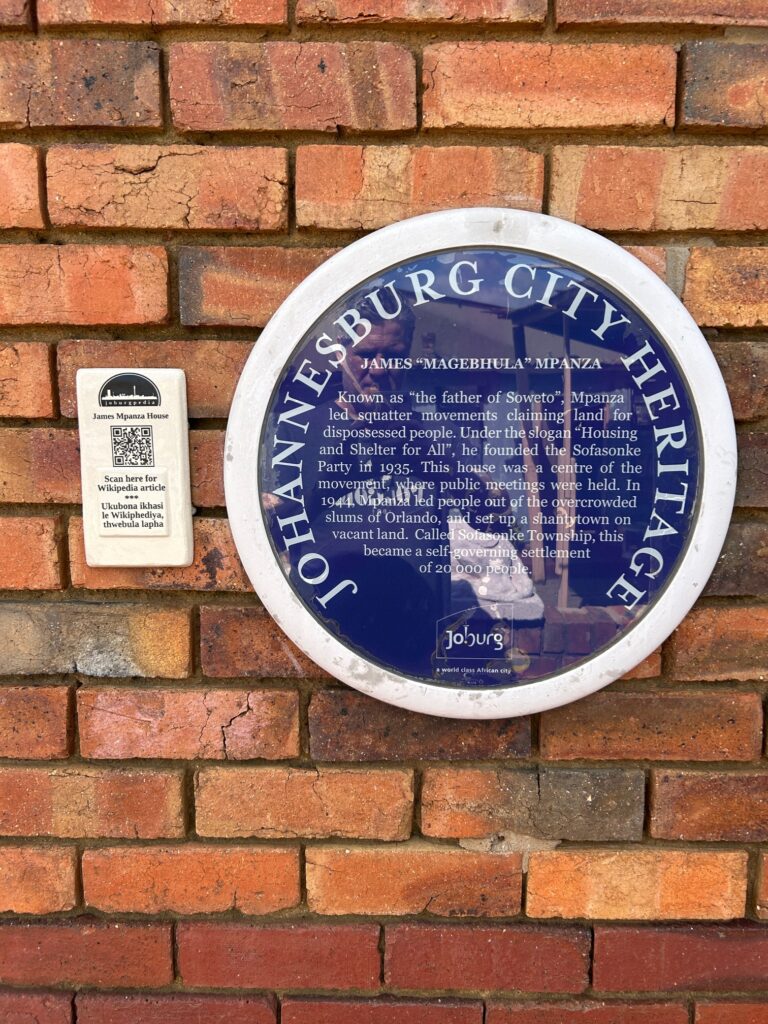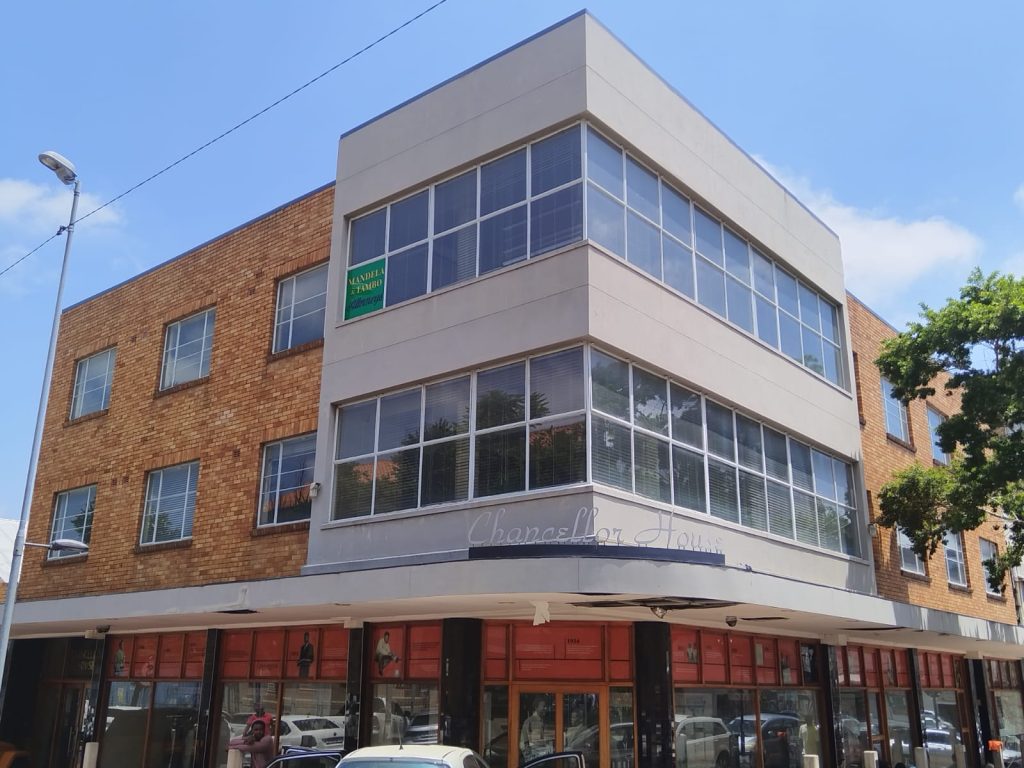James Mpanza house is a small standard-type rectangular semi-detached house, with corner veranda under the main roof. The veranda has been enlarged. The available space on the erf has been effectively utilised by the construction of informal structures (shacks) backed onto the boundary. These structures are currently for rentals. It has an outside toilet with a communal tap used by the tenants.
James Mpanza, affectionately known as “Sofasonke” (a famous slogan meaning “We will die together”), was born in Natal in 1889. Not much has been written about his early life other than that he was Jailed for murder in 1914, and spent 13 years in prison during which time he experienced a Christian conversion, became a preacher to his fellow prisoners, and wrote a short book. The Battles of the Christian's Pathway. After his release on parole in 1927 (to mark a visit by Edward VIII, Prince of Wales, he became a teacher in Pretoria, then later moved to Johannesburg.
After he was expelled from Betrams under the Urban Areas Act, in 1934 Mpanza moved to Orlando, taking up residence at no. 957 Phiela Street. He was soon elected to serve on the Orlando Advisory board, the only form of representation of Black people at the time in urban areas.
It was at this time that he led a group of families who were living in appalling conditions around Newclare, Kliptown, and surrounding areas in Orlando to erect sacking shelters. This was a way to convince the Johannesburg City Council about the overcrowding problems and shortage of housing. His slogan demanded “Housing and shelter for all”.
James Mpanza was a flamboyant founder and leader of the Sofasonke Party (together we die) in Orlando. A charismatic figure who often rode horseback, he has sometimes been referred to as the founder of Soweto.
In 1937, he formed the Orlando Boys' Club, which was renamed Orlando Pirates Football Club in 1939. In 1958, he sent a proposal to the City of Johannesburg for a stadium in Orlando, which resulted in the construction of Orlando Stadium in 1959.
The two cement lion sculptures that were erected during Mapanza’s struggle are still intact. The sculptures are said to have been donations given to Mpanza by his supporters and admirals. These lions are symbolic of what his admirers thought of him, a brave person with great strength to fight the enemies, in this case, improving the living conditions of his own people.
As a result of his popularity with the communities, his house became the headquarters of the squatter movement. People with housing problems continued to flock to his house in need of assistance. According to his daughter Elizabeth, the house used to be like a welfare office, with newcomers been referred to him on arrival in Johannesburg.
Mpanza died in this house in 1970 and was buried at the Doornkop Cemetery. Following his death, the house was under Elizabeth’s ownership until she passed away in 2006.
Major Honours & Awards for James Mpanza

NHRA: Declared as a Provincial Heritage Site (Formal Protection status ) in Sept. 2011.

A culmination of research gathered over many years, the Online Johannesburg Heritage Register is being launched on Nelson Mandela Day 18 July 2025.
Among the many heritage sites featured is Chancellor House, the downtown offices of Mandela and Tambo Attorneys in the 1950s. After having been vacant and shuttered for more than a decade, this iconic building is being revived and brought to life once again as offices for the Community Development Department, which oversees the City’s Arts, Culture & Heritage Services.